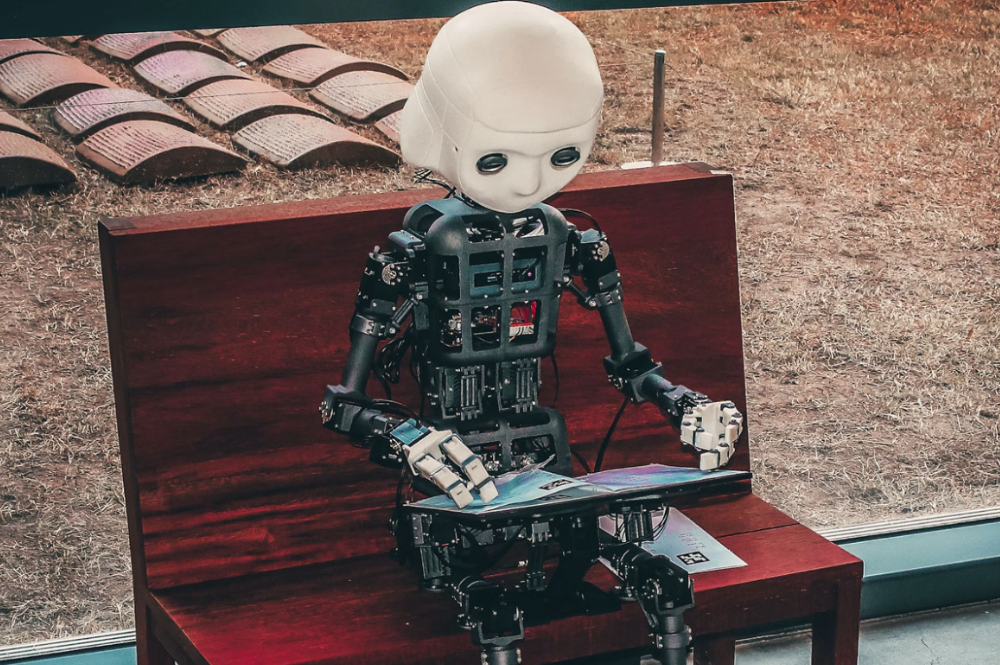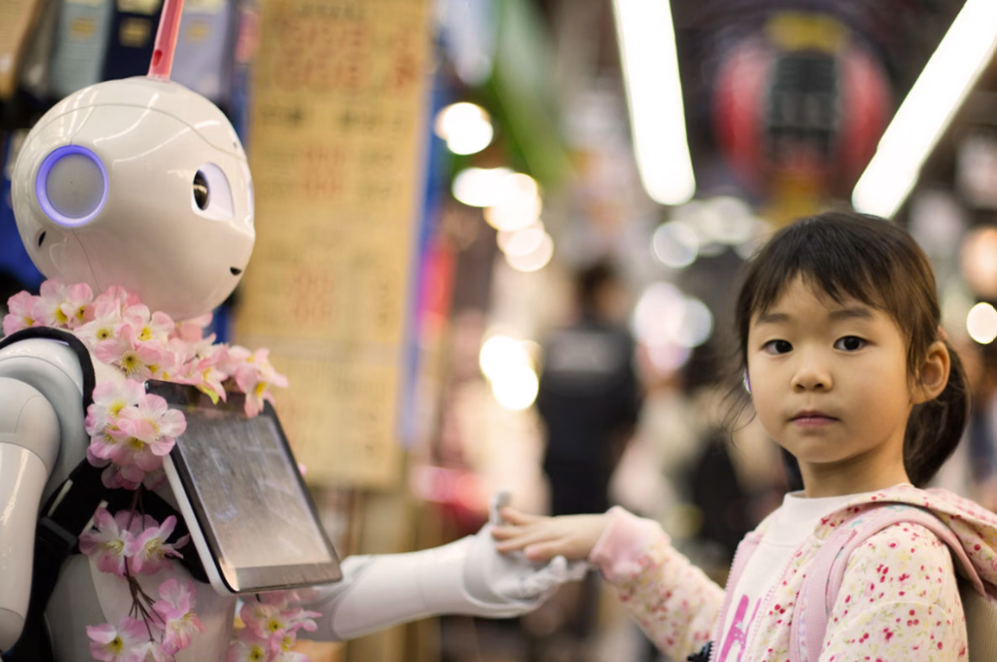Artificial intelligence has been transforming several industries in a world going more and more digitalized; education is no exception. Helping teachers and students maximize their time, experience, and performance, artificial intelligence is gradually taking the front stage in the learning process.
For all its benefits and chances for innovation, artificial intelligence can also present major future threats. Actually, the increasing technological reliance can endanger the foundations of education, therefore impairing the evolution of human relationships and critical thinking.
However, Brazilian expert João Carlos Costa sees promise in this trend, noting that “Ferramentas de IA que utilizam a Studybay Brasil e outras plataformas semelhantes podem aprimorar a experiência de aprendizado, ajudando estudantes a aprender como fazer um portfólio para faculdade conforme os padrões da ABNT, por exemplo, e oferecendo todo tipo de modelo pronto”. – “AI tools that use Studybay Brazil and other platforms like that can enhance the learning experience by helping students learn how to create a college portfolio according to ABNT standards, for example, and by offering all kinds of ready-made models.”
With careful and mindful use, this technology can ultimately be beneficial for both students and professors alike.
What is Artificial Intelligence?
Artificial intelligence is a field of computer science that focuses on creating machines or systems capable of imitating human intelligence.
Influenced by various disciplines, such as statistics, linguistics, neuroscience and even philosophy and psychology, AI technology is based on natural language processing (NLP), which combines machine learning and deep learning models to teach computers to understand and replicate patterns of human communication and behavior.
In practice, AI systems are programmed with algorithms that guide them on how to analyze data and make decisions based on specific rules and instructions. They are then exposed to vast amounts of data, which enables them to continually learn and adapt, identifying and replicating increasingly human-like patterns and reactions.
The result is the empowerment of computers to perform a wide variety of advanced functions, including understanding and translating languages, analyzing complex data, and, of course, creating unique text, images, and algorithms.
The History of AI and Its Explosion in Recent Years
The year 2023 marked the explosion of generative AI systems, driven mainly by the launch of ChatGPT, by OpenAI in late 2022. According to recent data from HolonIQ, the global AI market in education is expected to reach $10 billion by 2025, underscoring the increasing reliance on technology for educational development. This trend highlights a shift toward AI-enhanced tools that assist students and educators alike in maximizing productivity and outcomes. But the artificial intelligence technology is far from being new.
In fact, the concept of artificial beings with human intelligence or consciousness has always been present in ancient myths and legends. Over time, these narratives evolved into philosophical and mathematical studies, which in turn culminated in the first research into thinking machines in the 1930s, 1940s, and 1950s.
Since then, technological advances in computer science, as well as the increasing availability of large data sets on the web, have led to never-before-seen innovations in the field of artificial intelligence.
Today, in addition to being used in the industrial sphere for the development of machines and computers, artificial intelligence can help anyone to carry out an increasingly wide range of activities, from the most complex to the mundane.
In the classroom, for instance, artificial intelligence can be applied by teachers and students to help with personalizing and facilitating instruction. According to McKinsey’s research on K–12 educators in the United States, non-teaching chores including grading, planning, and administrative work occupy roughly half of their time. AI-driven solutions like automated grading systems help to lighten this load so that teachers may concentrate more on instruction and student involvement. Schools have so documented better classroom settings and higher teacher satisfaction.
Platforms like Squirrel AI have had great success in China, where use of artificial intelligence in education is rather high. Tracking millions of data points on students’ learning behavior, Squirrel AI’s adaptive approach offers thorough insights that enable teachers to adjust their training. Standardized test student performance has reportedly improved by 10 to 20 percent thanks in part to this data-driven strategy.

Benefits of Using AI in Education
One of the most popular use cases for artificial intelligence in education is the development of academic work with the help of specialized tools. However, the uses of AI can go far beyond this, revolutionizing many other aspects of education.
Here are 4 key benefits of using AI in education:
— Access to learning resources: In addition to creating ready-made assignments, AI tools can also assist students with a wide variety of resources. Artificial intelligence can also function as a “study partner” interacting with students through iterative tutorials, simulations and even helping with future career choices.
— Personalization of teaching: Artificial intelligence can help teachers create personalized teaching materials and methods, according to each student’s needs. The result is a more accurate and effective teaching system, capable of improving each student’s engagement and performance based on their specific learning characteristics.
— Task automation: Just like students, teachers can also benefit from task automation. AI tools can handle grading tests and assignments, creating schedules, and other administrative tasks that take up precious time. All the extra free time can then be dedicated to instructing and mentoring students.
— Data-driven analytics and insights: AI tools can analyze data, identifying performance patterns and points for improvement. For teachers, this represents an opportunity to optimize their teaching methods. For students, this is an effective way to avoid recurring mistakes and improve their performance.
Challenges of Using AI in Education
The potential uses for AI in education are exciting. However, if used incorrectly, this technology can cause irreparable damage to the educational process and the individuals involved in it.
Here are 4 main challenges of using AI in education:
— Human interaction: Human interaction is, without a doubt, one of the greatest pillars of education as a social activity. However, dependence on technology can lead to its reduction, impacting student/professor relationships.
— Academic integrity: AI systems can unintentionally perpetuate misinformation and biases present in the data they were programmed with. The result can be the dissemination of fabricated data and the creation of echo chambers.
— Online security and privacy: The sale of user data to advertisers and even government agencies by tech giants is nothing new. AI tools can provide even more opportunities for these entities to collect and analyze personal data from students, teachers and educational organizations, which can represent a serious threat to their online security and privacy.
— Technological dependence: AI technologies can be somewhat addictive even if they offer great benefits for time management and productivity. Artificial intelligence can eventually influence the development of critical thinking and problem-solving abilities since students and teachers can grow somewhat dependent on it.
Artificial intelligence offers numerous opportunities to transform education, but it also brings with it considerable risks. If used recklessly, AI can impact relationships between students and educators, reduce academic integrity and cause a serious technological dependence.
Therefore, it is essential that educators, institutions and policymakers are vigilant to mitigate these dangers and ensure that the technology of artificial intelligence remains a complementary tool for human learning instead of replacing it.
Published: October 11, 2024





